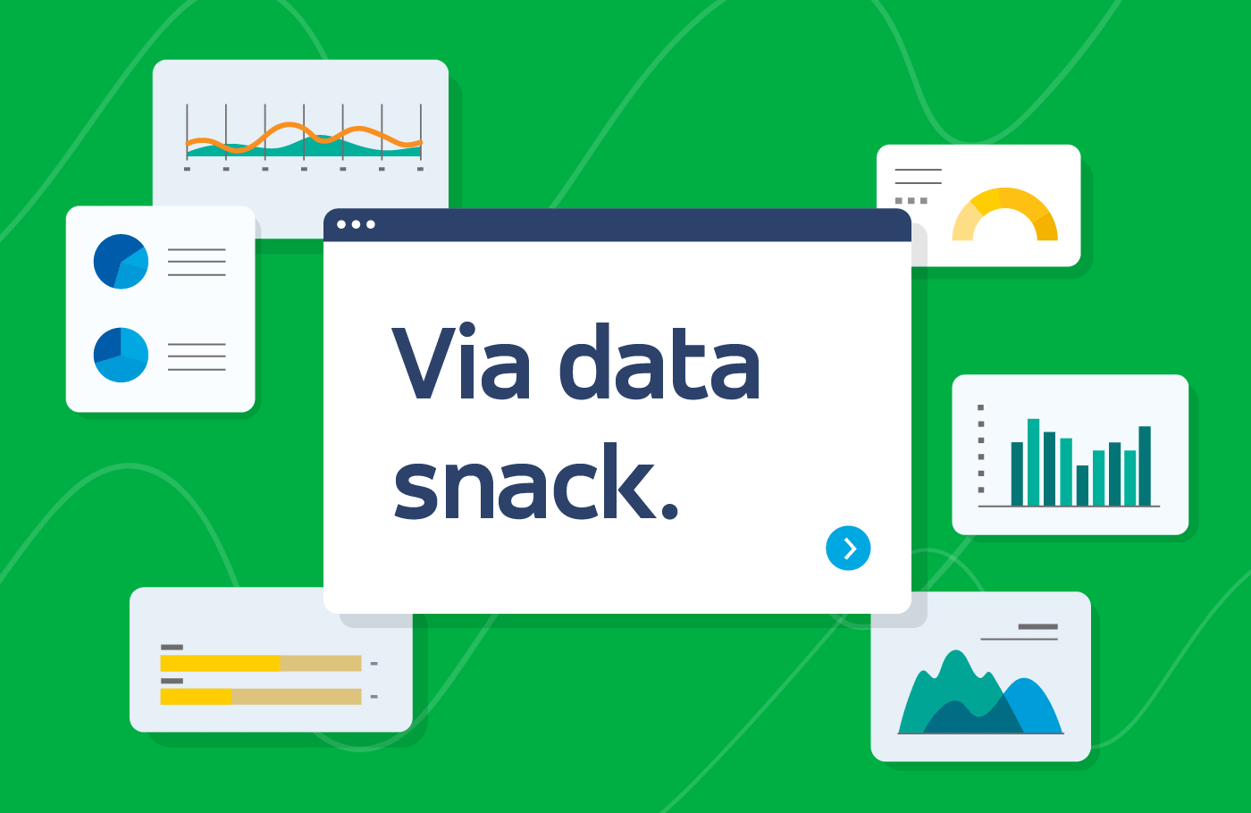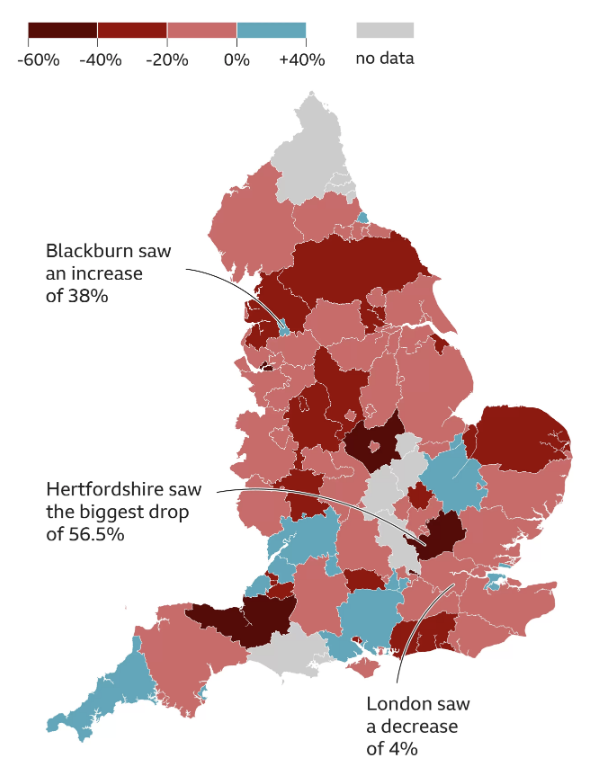Across the nation, bus services shrank by 14% over a five-year period since 2017, from 1.5 trillion vehicle miles to 1.29 trillion, UK Department for Transport figures suggest. The total vehicle miles of buses each year fell by 42 million miles on average from 2016. Residents in some parts of the country — most rural, transport deserts, or with a larger percentage of lower-income households — are more likely to get left in the lurch when the buses stop rolling.
Bus services have been cut across England
% change in vehicle miles on bus services in 2021-2022, compared to 2016-17, by transport authority.
Source: BBC News
In authorities like Hertfordshire, Leicestershire, Slough, and Halton, bus services were reduced by a whopping 40%+ between 2016-17 and 2021-22, taking both commercial and local authority-supported bus mileage into account. In most cases, buses are not disappearing completely — they’re just not showing up as often, or not running as late as they used to. Dwindling demands due to the pandemic have accelerated bus cuts. Though ridership is recovering, it’s still 32% lower than pre-pandemic levels. While local authorities are tightening their belts to deal with all the challenges in the current economic climate — rising petrol costs, ongoing driver shortage, surging inflation — there’s one factor making matters even worse: they don’t have sustained money to level up or even maintain the services.
That’s why councils and local governments are increasingly looking for creative, efficient ways to meet a new bus demand. Many turned to digital demand-responsive transport (DDRT). Cities like Milton Keynes have integrated this new mode of transport as a core part of how communities move in the long run, and have seen huge socioeconomic successes. Learn more about how DDRT could be a remedy for using strapped cash to level up transport services.

Data Journalist





